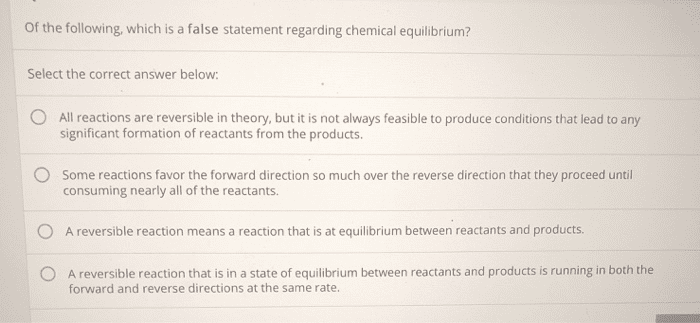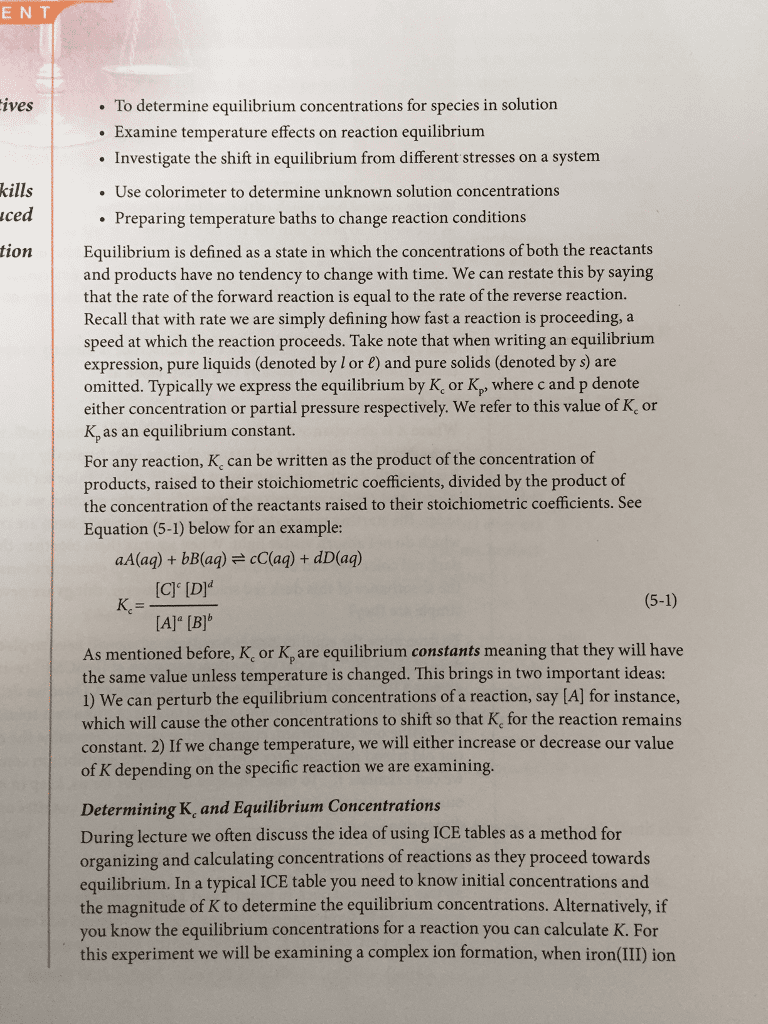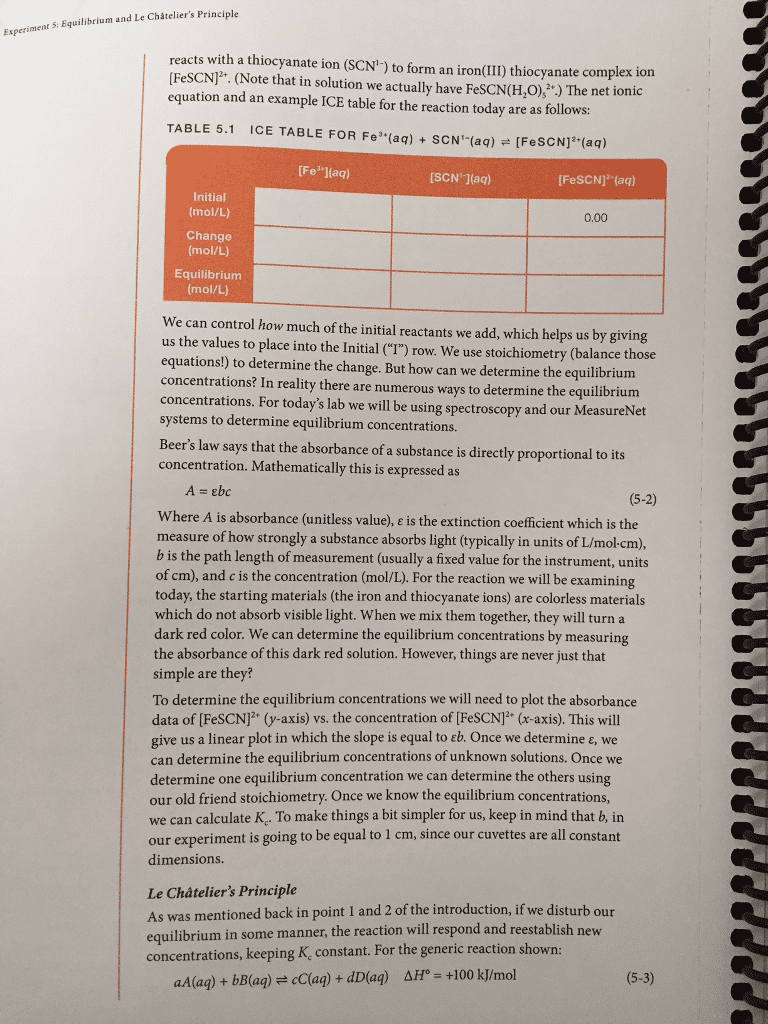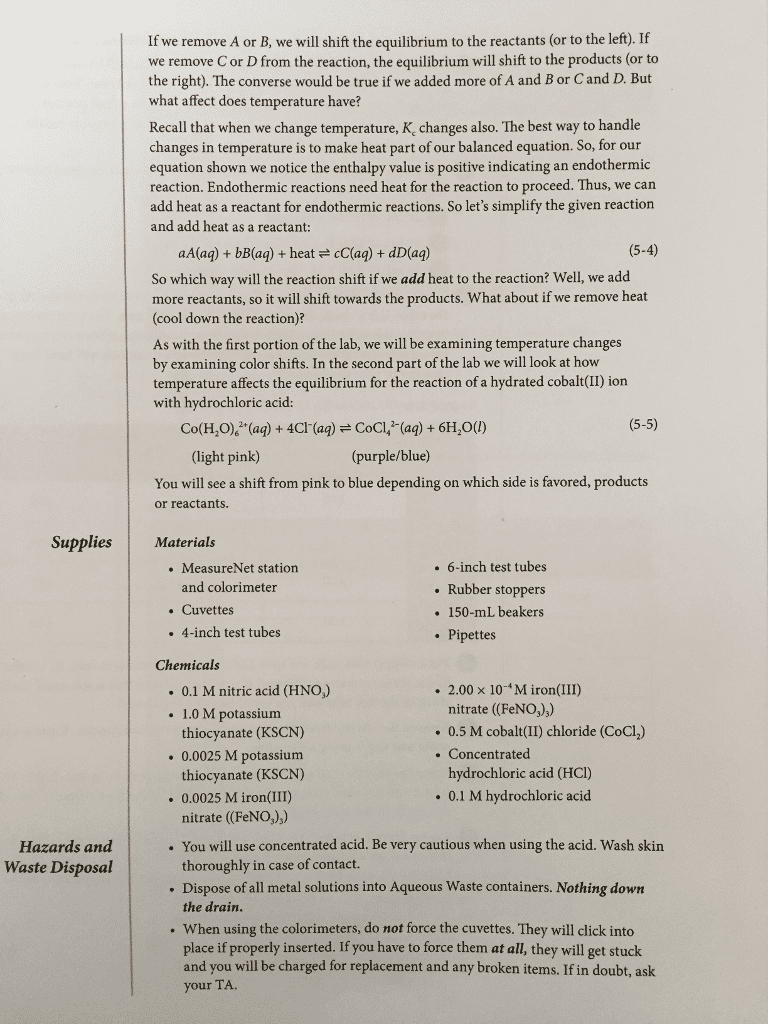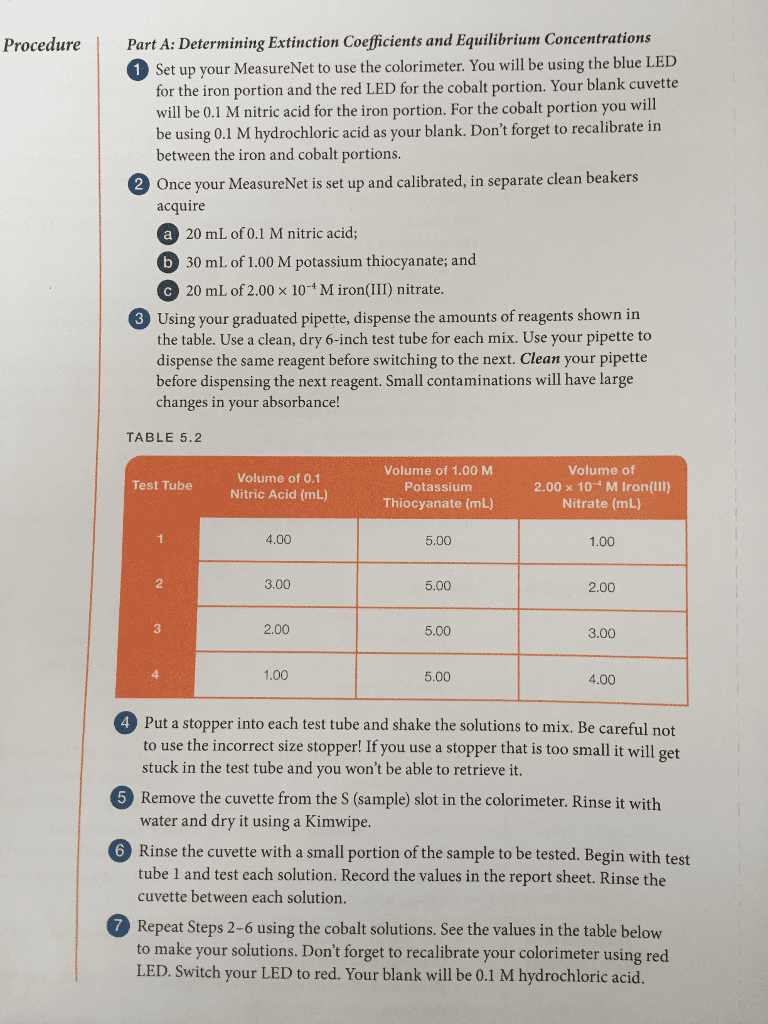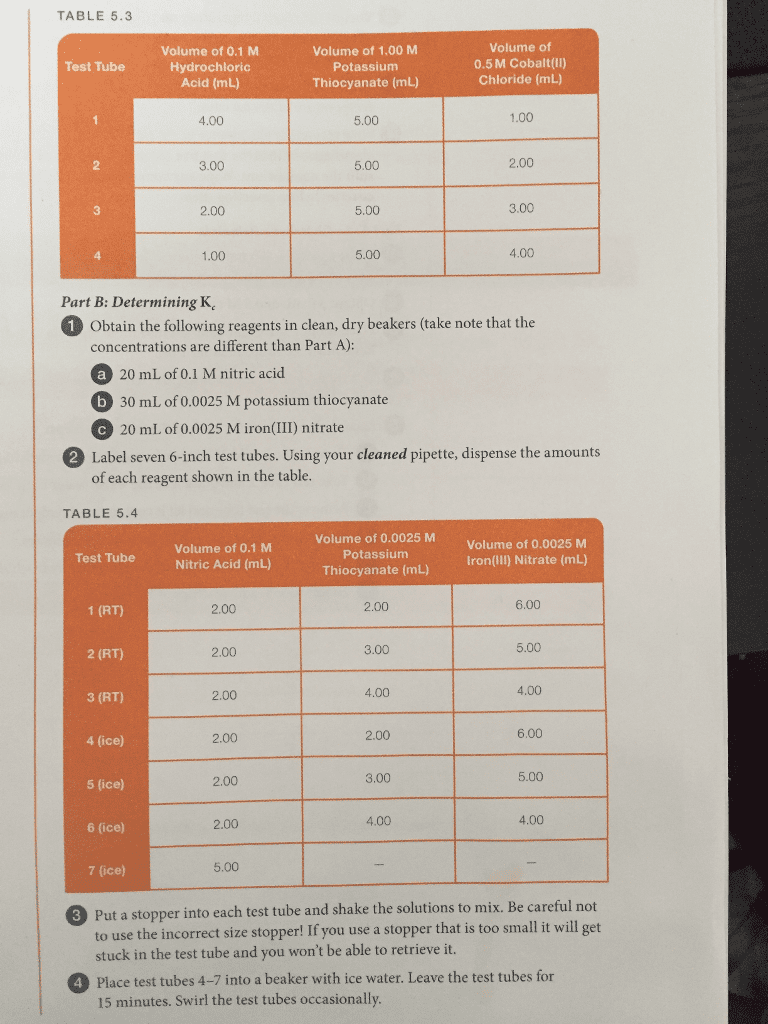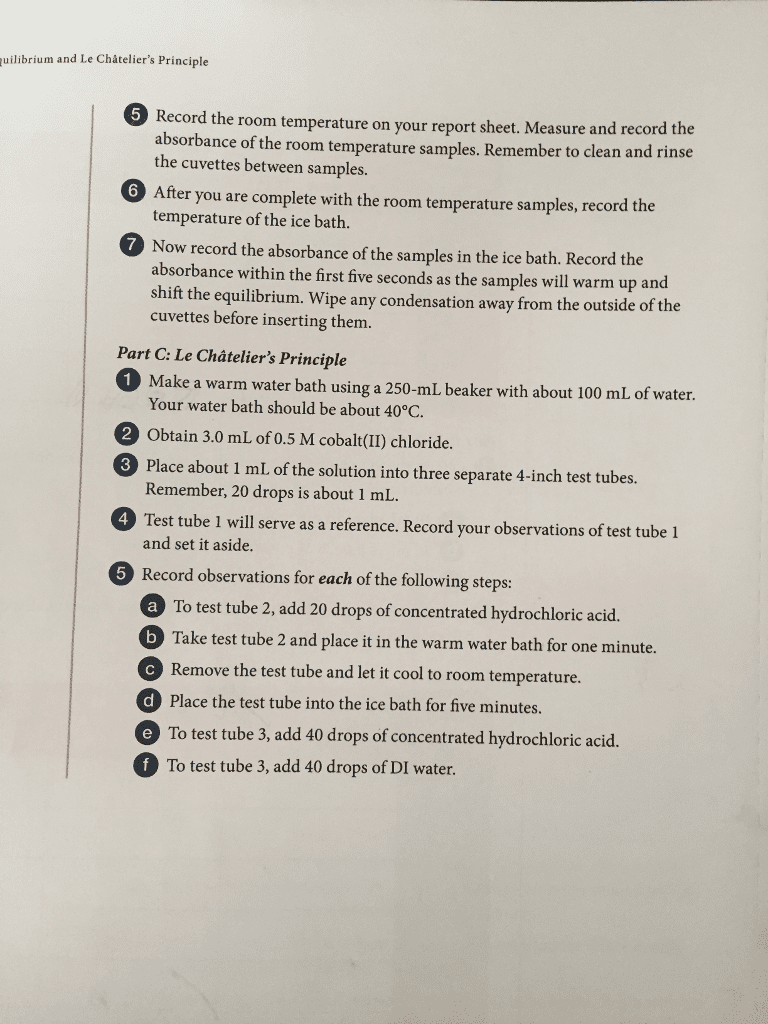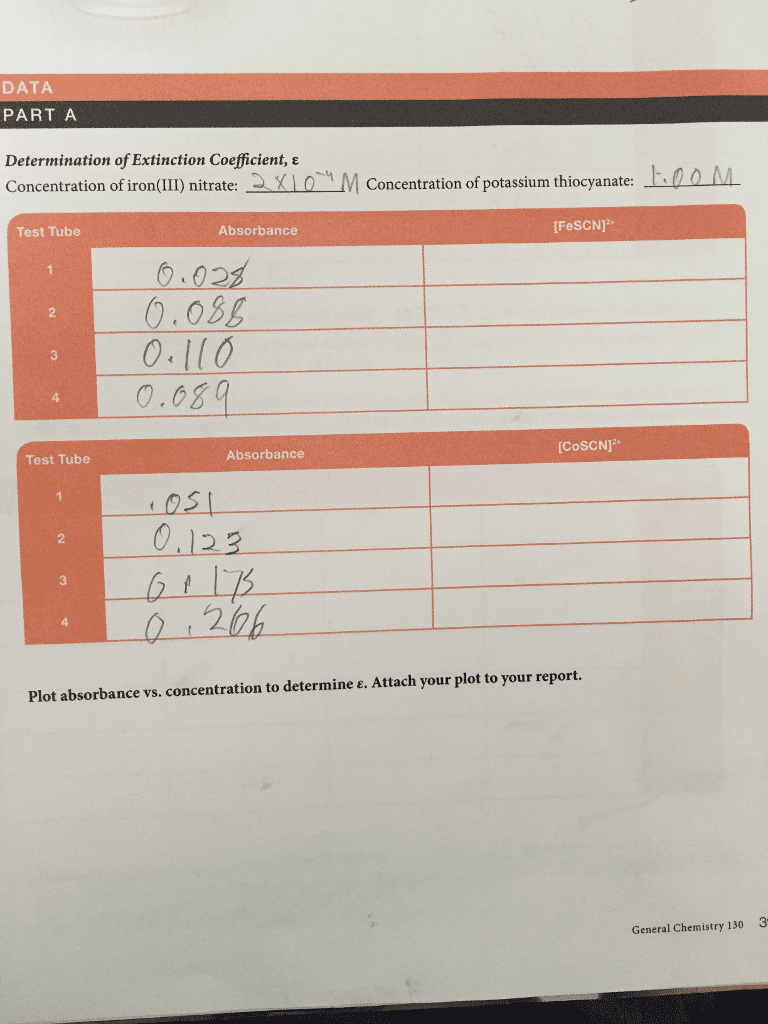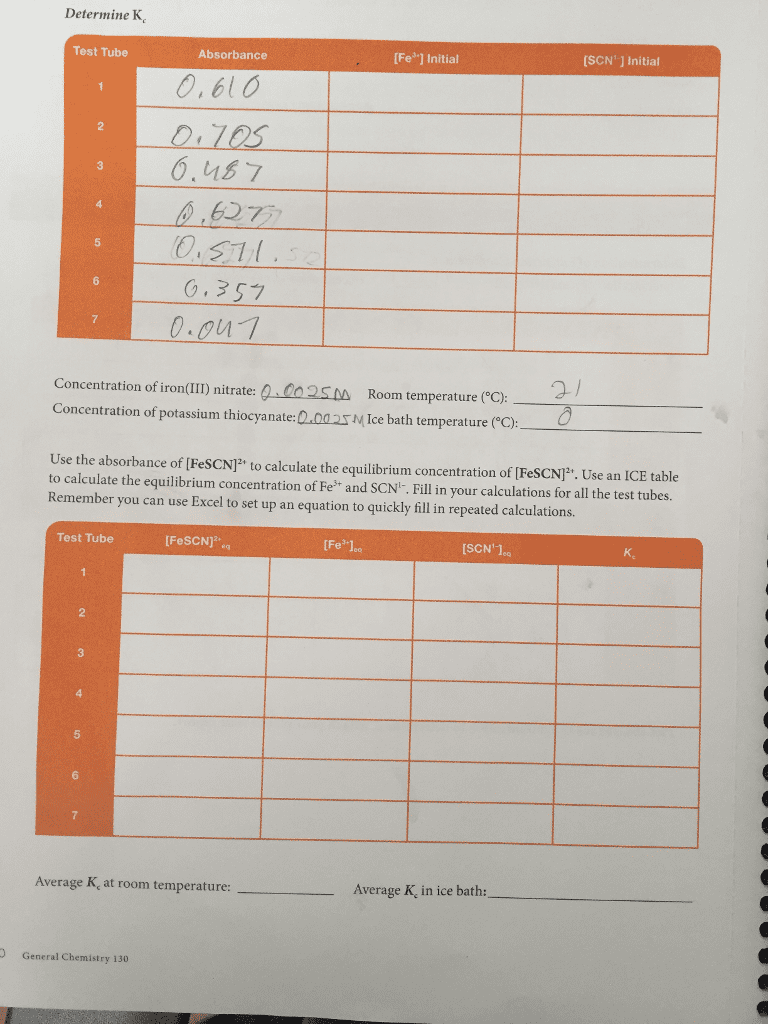CHM135H1 Chapter 14, 15, 16: Unit 4 Notes

Chapter 14
14.1: The Equilibrium State
• Many reactions do not go to completion
• All chemical reactions are reversible
o Ieesile eatios ae those that poeed eal to opletio
▪ the equilibrium mixture contains almost all products and almost no
reactants
▪ the reverse is often too slow to be detected
• The reason why chemical reactions reach an equilibrium state follows from chemical
kinetics
• Chemical equilibrium is a dynamic state in which forward and reverse reactions continue
at equal rated so that there is not net conversion of reactants to products
14.2: The Equilibrium Constant
• Equilibrium Equation: an equation that relates the concentrations in an equilibrium
mixture
o Is also known as the law of mass action
=[][]
[][]
• is the equilibrium constant
o Values are dimensionless
o Are temperature-dependent
• The expression of the right side is called the equilibrium constant expression
o Substances cannot be pure solids or pure liquids
• Whenever chemical equations for 2+ reactions are added to get the equation for an
overall reaction, the equilibrium constant for the overall reaction equals the product of
the equilibrium constant for the individual reactions
14.3: The Equilibrium Constant
• Equilibrium equations for gas-phase reactions are often written using partial pressures
rather than molar concentrations
o Values are dimensionless
=∆
• R is the gas constant: 0.08206 (L*atm)/(K*mol)
• T is the absolute temperature
• ∆n = (c+d) – (a+b) is the number of moles of gaseous products minus the number of
moles of gaseous reactants
14.4: Heterogeneous Equilibria
• Homogeneous Equilibria: equilibria in which all reactants and products are in a single
phase, usually either gaseous or solution
find more resources at oneclass.com
find more resources at oneclass.com

• Heterogeneous Equilibria: equilibria in which reactants and products are present in
more than one phase
• Include only the concentrations of gases and solutes in solutions because only those
concentrations can be varied
14.5: Using the Equilibrium Constant
• Knowing the value of the equilibrium constant for a chemical reaction lets us:
o judge the extent of the reaction
▪ how far the reaction proceeds before the equilibrium state is reached
o predict the direction of the reaction
o calculate equilibrium concentrations from initial concentrations
• A large value of means the equilibrium ratio of products to reactants is very large
o Reaction proceeds near to completion
• A small value of means the equilibrium ratio of products to reactants is very small
o Reaction hardly proceeds before equilibrium is reached
• Reverse reaction does not occur at any appreciable rate since the is so small
• If a reaction has an intermediate value of , the concentrations of both reactants and
products are present in the equilibrium mixture
• Generalizations about the composition of equilibrium mixtures:
o If > , products predominate reactants; reaction proceeds to completion
o If < −, reactants predominate products; reaction hardly proceeds
o If − < < , concentrations of both reactants and products are present
• The reaction quotient is defined in the same way as the equilibrium constant
o Concentrations in are not necessarily equilibrium values
o Predict the direction of the reaction by comparing the values of and
• If < , net reaction goes from left to right (reactants to products)
• If > , net reaction goes from right to left (products to reactants)
• If = , reaction is at equilibrium
14.6: Factors that Alter the Composition of an Equilibrium Mixture – Le Châtelies Piiple
• Main goal of chemical synthesis is to maximize the conversion of reactants to products
while minimizing the expenditure of energy
o Achieved if the reaction goes to completion at mild temperature and pressure
*Note: If the reaction gives an equilibrium mixture that is rich in reactants and poor in products,
the experimental conditions must be adjusted
• Several factors can alter the composition of an equilibrium mixture:
o The concentration of reactants or products can be changed
o The pressure and volume can be changed
o The temperature can be changed
o Addition of catalyst (increases rate at which equilibrium is reached)
find more resources at oneclass.com
find more resources at oneclass.com

• Le Châtelies Piiple: If a stress is applied to a reaction mixture at equilibrium, net
reaction occurs in the direction that relieves the stress
o Stess efes to a hage i oetatio, pessue, olue, o tepeatue
that disturbs the original equilibrium
o Reaction occurs to change the composition of the mixture until a new state of
equilibrium is reached
14.7: Altering an Equilibrium Mixture – Changes in Concentration
• When an equilibrium is disturbed by the addition or removal of any reactant or product,
Le Châtelies piiple pedits that:
o The concentration stress of an added reactant/product is relieved by net
reaction in the direction that consumes the added substance
o The concentration stress of a removed reactant/product is relieved by net
reaction in the direction that replenishes the removed substance
• Handy rule for predicting changes in the composition of an equilibrium mixture
o Does not explain why the changes occur
• Shifts in position of equilibrium can be detected by observing how the colour of the
solution changed when we add various reagents
14.8: Altering an Equilibrium Mixture – Changes in Pressure and Volume
• Aodig to the le Châtelies piiple, et eatio ill ou i the dietio that
relieves the stress of the increased pressure
o Number of moles of gas must decrease
o Predict that the net reaction will proceed from left to right
• Le Châtelies Piiple pedits that:
o An increase in pressure by reducing the volume will bring about net reaction in
the direction that decreases the number of moles of gas
o A decrease in pressure by expanding the volume will bring about net reaction in
the direction that increases the number of moles of gas
• Whe applig Le Châtelies Piiple to a heteogeeous euiliiu, the effet of
pressure changed on solids and liquids can be ignored
• An inert gas does not disturb the equilibrium
o Adding at constant volume does not change the partial pressures/molar
concentrations of substances in the reaction
14.9: Altering an Equilibrium Mixture – Changes in Temperature
• If the temperature remains constant, concentration, pressure, or volume changes dot
change the value of the equilibrium constant
• The temperature dependence of an equilibrium constant depends on the sign of ∆�°
o The equilibrium constant for an exothermic reaction (negative ∆�°) decreases as
the temperature increases
o The equilibrium constant for an endothermic reaction (positive ∆�°) increases as
the temperature increases
find more resources at oneclass.com
find more resources at oneclass.com

90
CHM135H1 Full Course Notes
Verified Note
90 documents
Document Summary
14. 2: the equilibrium constant (cid:1863)(cid:3030: (cid:1863)(cid:3030) is the equilibrium constant, values are dimensionless, are temperature-dependent (cid:1863)(cid:3030)=[(cid:1829)](cid:3030)[(cid:1830)](cid:3031) 14. 4: heterogeneous equilibria: homogeneous equilibria: equilibria in which all reactants and products are in a single phase, usually either gaseous or solution, heterogeneous equilibria: equilibria in which reactants and products are present in more than one phase. Include only the concentrations of gases and solutes in solutions because only those concentrations can be varied. If a reaction has an intermediate value of (cid:1863)(cid:3030), the concentrations of both reactants and. If (cid:1863)(cid:3030) > (cid:883)(cid:882)(cid:2871), products predominate reactants; reaction proceeds to completion. If (cid:1863)(cid:3030) < (cid:883)(cid:882) (cid:2871), reactants predominate products; reaction hardly proceeds. If (cid:1843)(cid:3030) < (cid:1863)(cid:3030), net reaction goes from left to right (reactants to products) If (cid:1843)(cid:3030) > (cid:1863)(cid:3030), net reaction goes from right to left (products to reactants) If (cid:1843)(cid:3030) = (cid:1863)(cid:3030), reaction is at equilibrium.


